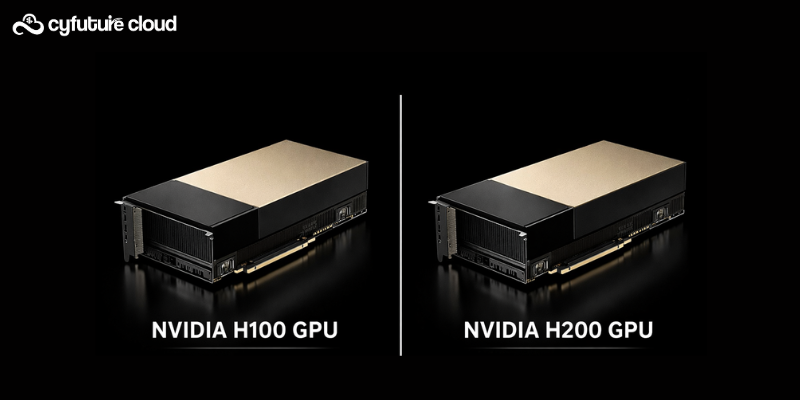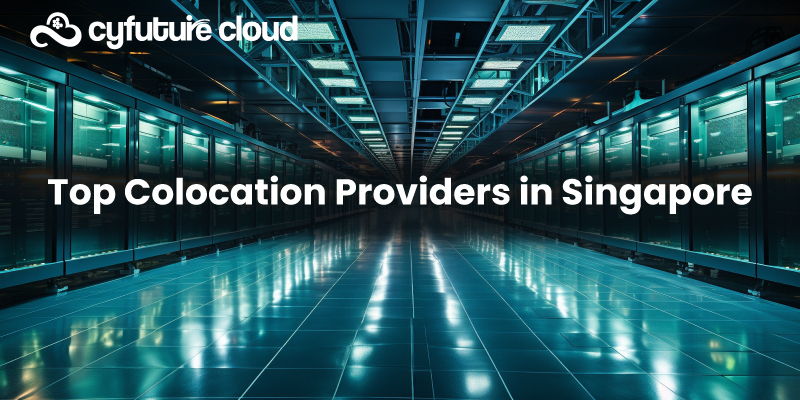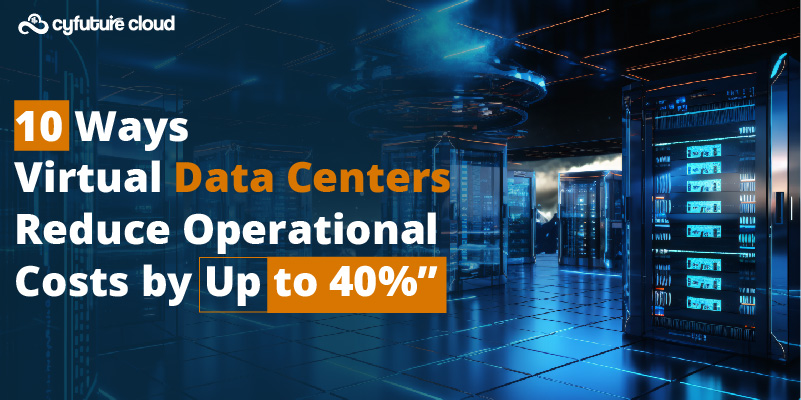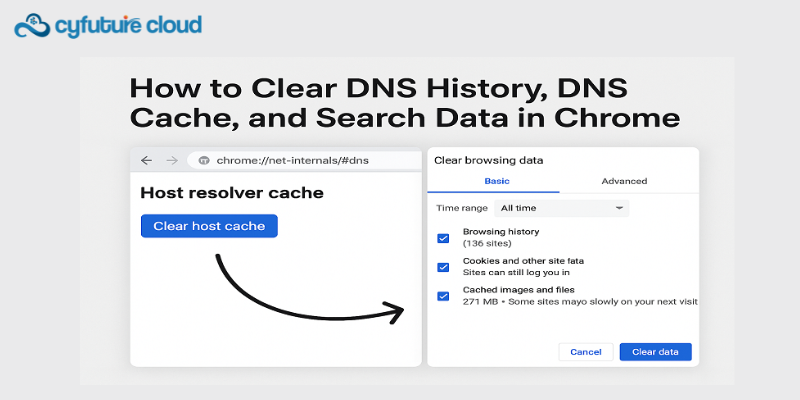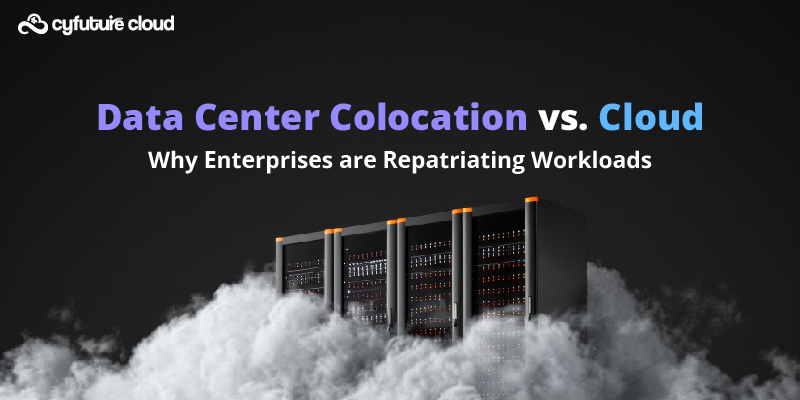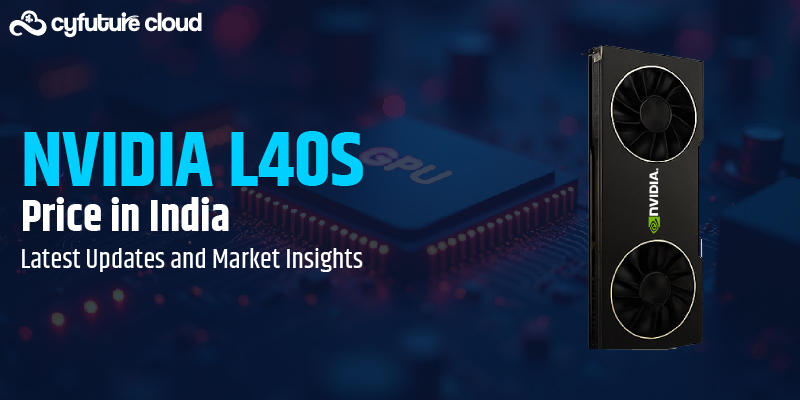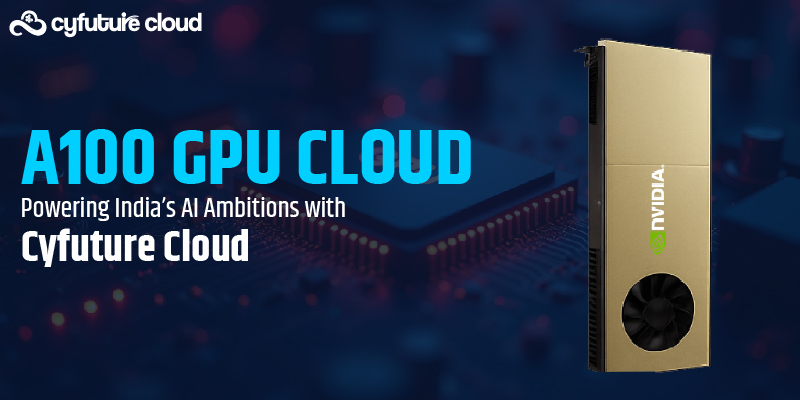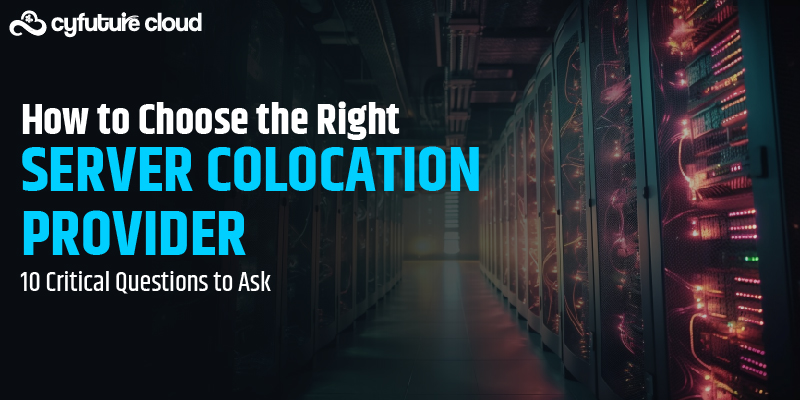Table of Contents
- 1. The Explosive Growth of Data in India
- The Indian Data Center Boom: Setting the Stage
- What is High-Speed Ethernet (HSE)?
- Why the Rapid Shift to HSE in Indian Data Centers?
- How HSE Powers Cyfuture Cloud and Data Center Solutions
- Impact of High-Speed Ethernet on Data Center Efficiency in India
- The Technology Behind HSE: A Quick Dive
- Key Benefits of HSE Adoption in Indian Data Centers
- Summary Table: High-Speed Ethernet vs. Other Technologies
- Key Use Cases of HSE in Indian Data Centers
- Challenges and the Road Ahead
- Conclusion: HSE as the Foundation of India’s Digital Future
Demand for cloud computing, artificial intelligence, IoT, and 5G technologies is driving India’s explosive digital economy. Data centers in India must change to accommodate higher bandwidth, less latency, and more scalability as companies and consumers produce enormous volumes of data.
Modern data centers are starting to be built on High-speed Ethernet (HSE), which includes 25G, 40G, 100G, and even 400G systems. Companies like Cyfuture Cloud are using HSE to provide businesses throughout India with faster, more dependable, energy-efficient data center solutions.
But why is HSE adoption accelerating so rapidly in India? This blog explores the key drivers behind this trend and how Cyfuture Cloud’s data center infrastructure is optimized for high-speed networking.
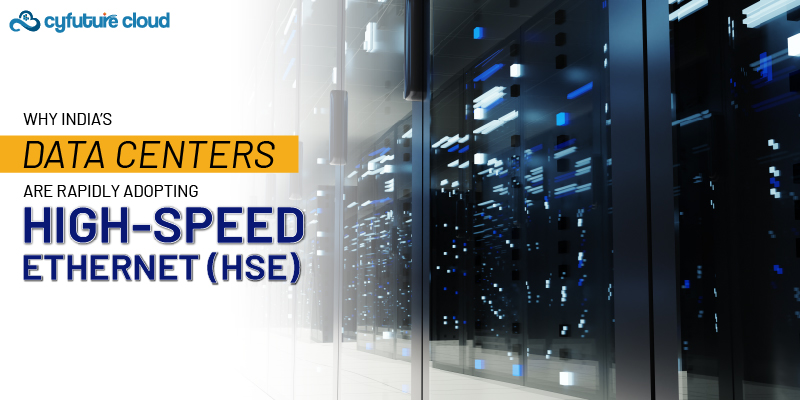
1. The Explosive Growth of Data in India
Digital Transformation & Cloud Adoption
- By 2026, India’s cloud industry is estimated to have grown to $13 billion (NASSCOM).
- Companies needing speedier data flow are switching from legacy systems to cloud-based alternatives.
- Cyfuture Cloud’s data centers support enterprises with seamless scalability using HSE.
Rising Demand for AI, Big Data, and IoT
- For real-time processing, AI workloads call for low-latency, high-bandwidth networks.
- IoT devices create enormous volumes of data that call for fast interconnects in data centers.
Government Initiatives (Digital India, Data Localization)
- Policies, including Data Localization, demand that Indian user data be kept inside of India.
- As a result, hyperscale data centers—which depend on HSE for effective operations—have exploded.
The Indian Data Center Boom: Setting the Stage
Exponential Growth and Digital Ambitions
India will have 140+ data centers, with many running 400G Ethernet for cloud workloads by 2026. Thanks to strong infrastructure and closeness to undersea cable landing stations, major metros, including Mumbai, Chennai, Hyderabad, and Bengaluru, are becoming ideal sites. Government policies pushing digital sovereignty and data localization help to magnify this expansion.
Edge Computing and Decentralization
Edge computing is changing data center layouts. 5G networks demand sub-10ms latency. Hence, data centers are forced to use 100G/400G Ethernet for real-time computing.
Particularly in Tier 2 and Tier 3 cities, smaller edge data centers are being built closer to consumers as IoT proliferation and 5G allow. This decentralization lowers latency, improves user experience, and democratizes access to digital services in both urban and rural India.
HSE Reduces Energy Costs by Up to 30%
- Energy-Efficient Ethernet (EEE) in modern switches cuts power consumption without sacrificing speed.
- Cyfuture Cloud’s green data centers leverage liquid cooling + HSE for sustainability.
India’s UPI Revolution Runs on HSE
- UPI transactions (10+ billion/month) rely on high-speed, low-latency data center networks to process payments in milliseconds.
- Financial institutions use MACsec encryption over HSE to secure transactions.
AI & Big Data Need 400G+ Speeds
- Generative AI models (like ChatGPT) require terabit-scale networking—future Indian data centers are preparing for 800G Ethernet.
- Tier-1 Indian data centers already use HSE for real-time analytics in healthcare, fraud detection, and smart cities.
HSE Supports India’s Data Localization Laws
- With strict data sovereignty rules, Indian enterprises need high-speed local networks instead of cross-border transfers.
- Cyfuture Cloud’s HSE infrastructure ensures compliance while maintaining global cloud performance.
The Future: Optical Ethernet & Quantum Security
- 1.6 Terabit Ethernet (1.6T) is in development and is expected to reach India by 2030.
Quantum-resistant encryption will soon secure HSE networks against next-gen cyber threats.
Speed & Bandwidth Projections
|
Year |
Dominant HSE Standard |
Emerging Tech |
|
2025 |
100G/400G Ethernet |
800G Pilots |
|
2027 |
400G Mainstream |
1.6T Testing |
|
2030 |
800G Standard |
3.2T R&D |
By 2030, 50% of Indian data centers will deploy 800G+ Ethernet for AI/ML workloads.
What is High-Speed Ethernet (HSE)?
High-speed Ethernet is Ethernet technology offering 25 Gbps, 40 Gbps, 100 Gbps, 400 Gbps, and beyond—now reaching 800 Gbps and even 1.6 Tbps in cutting-edge installations. Modern data centers are built on HSE, which enables ultra-fast, low-latency, dependable data transfer needed for cloud computing, artificial intelligence, IoT, and real-time analytics.
Why the Rapid Shift to HSE in Indian Data Centers?
Unprecedented Data Growth
- Exploding Internet Usage: India’s internet user base is fast rising; rural adoption is surpassing urban development. 56% of new users by 2025 will originate from rural areas, which will cause significant rises in data creation and consumption.
- Cloud and AI Workloads: Enterprises are moving to the cloud, implementing artificial intelligence, using big data analytics, and so depending on strong, high-throughput networks.
- IoT and 5G: The explosion of linked devices and 5G networks creates enormous amounts of data that calls for low-latency, fast communication.
Latency-Sensitive Applications
- Edge Computing: Edge computing—autonomous cars, smart cities, AR/VR—data centers must analyze and distribute data with single-digit millisecond latency to support real-time applications. Attaching this call for HSE.
- Content Delivery: Video streaming, gaming, and hyperlocal content delivery call for high bandwidth and low delay—which only HSE can give on a mass basis.
Scalability and Flexibility
- Hyperscale and Colocation Growth: Rising hyperscale and colocation data centers demand scalable, flexible networking capable of managing fast expansion and multi-tenant situations.
- Virtual Data Centers: Only with HSE are elastic, on-demand resources conceivable; solutions like Cyfuture Cloud’s Virtual Data Center use sophisticated networking to offer this.
Operational Efficiency and Cost Optimization
- Simplified Infrastructure: HSE simplifies cabling and lowers power and cooling costs by cutting the physical connections needed for high throughput.
- Automation and Management: High-speed, software-defined networks provide more automation, monitoring, and optimization—key for effective operations in vast-scale systems.
Security, Compliance, and Reliability
- Data Localization: Virtual Data centers must ensure safe, compliant, and fast transfer inside national borders—HSE is fundamental for this—with tougher data sovereignty regulations.
- Business Continuity: Disaster recovery, backup, and guarantee of continuous service delivery all depend on fast, redundant networking.
How HSE Powers Cyfuture Cloud and Data Center Solutions
Cyfuture Cloud: Built for the Future
- Robust Infrastructure: High-speed, redundant Ethernet backbones built within Cyfuture Cloud’s data centers provide dependability in uptime and performance for mission-critical workloads.
- Elastic Virtual Data Centers: Leveraging HSE, Cyfuture’s Virtual Data Center solution provides unmatched flexibility that lets companies quickly and safely grow resources.
- Seamless Managed cloud Services: High-speed networks let Cyfuture provide thorough monitoring, automation, and optimization—all of which free customers to concentrate on innovation.
Meeting Diverse Customer Needs
- Startups to Enterprises: From big companies to agile startups, Cyfuture’s HSE-powered solutions serve varied workloads—web hosting, databases, analytics, and more.
- Disaster Recovery: Rapid failover and recovery made possible by HSE guarantees business continuity even in the case of infrastructure breakdowns.
Impact of High-Speed Ethernet on Data Center Efficiency in India
Accelerated Data Handling and Performance
Enabling fast, low-latency data transfer and high-speed Ethernet (HSE)—including 100G, 400G, and now 800G and beyond—greatly improves the efficiency of Indian data centers. Enabling artificial intelligence, cloud computing, and advanced analytics—where vast amounts of data must be handled and rapidly transported between servers and storage systems—is absolutely vital. The adoption of HSE lets data centers keep up with the exponential expansion in data traffic caused by rising internet use, 5G deployment, and connected device proliferation.
Scalability and Flexibility
HSE’s scalability helps data centers to grow their infrastructure effectively. Operators can improve network speeds without redesigning the whole architecture as demand spikes. Ethernet switches offering multi-gigabit speeds (10GbE to 400GbE and greater) enable smooth interconnections between servers, storage, and networking equipment, therefore enabling data centers to react to changing workloads and client demands without bottleneck.
Support for Advanced Applications
For current uses such as artificial intelligence, machine learning, and real-time analytics, HSE is fundamental. These uses call for low-latency, predictable, high-throughput networking—which HSE provides. Technologies such as remote direct memory access over converged Ethernet (RoCEv2) and time-sensitive networking (TSN) improve real-time communication and high-performance computing, enabling data centers to be more effective and responsive to mission-critical activities.
Operational Efficiency and Cost Optimization
HSE lowers cabling complexity, power use, and cooling needs by grouping several slower connections into fewer high-speed links. In addition to cutting running expenses, this simplification of management, maintenance, and future improvements helps in large-scale systems. The utilization of optical transceivers and high-speed breakout connections helps with effective scaling and energy optimization even more.
Reliability and Business Continuity
For business continuity, network dependability and uptime—which High-speed Ethernet enhances—are paramount. Improved bandwidth and redundancy guarantee that data centers may offer strong backup and disaster recovery solutions, meet strict service level agreements (SLAs), and provide continuous services.
Driving India’s Digital Transformation
One main facilitator of India’s digital aspirations is the general acceptance of HSE. It helps edge computing to be integrated, cloud and virtualization technologies to flourish, and mega data centers to thrive. HSE guarantees that data centers remain adaptable, efficient, and able to satisfy the needs of a fast-digitizing economy as telecom and IT industries grow.
Through quicker data transfer, more scalability, operational simplicity, and strong support for advanced digital services, high-speed Ethernet is radically changing the efficiency of data centers in India. This puts Indian data centers front and first in terms of worldwide digital infrastructure, poised to assist the next wave of economic development and technical innovation.
The Technology Behind HSE: A Quick Dive
|
Ethernet Speed |
Typical Use Case |
Key Benefits |
|
10 Gbps |
Legacy data centers, small scale |
Entry-level, affordable |
|
25/40 Gbps |
Mid-size data centers, cloud |
Better throughput, cost-effective |
|
100 Gbps |
Hyperscale, edge, AI workloads |
High bandwidth, low latency |
|
400/800 Gbps |
Next-gen AI, cloud, hyperscale |
Ultra-high performance, future-proof |
- Time-Sensitive Networking (TSN): Enables deterministic, real-time communication for mission-critical applications.
- Advanced Optics and Cabling: New standards (e.g., IEEE 802.3ck, 802.3db) simplify high-speed connections and improve power efficiency.
Key Benefits of HSE Adoption in Indian Data Centers
Enhanced User Experience
- Single-digit millisecond latency for end users, crucial for mobile-first India.
- Seamless streaming, gaming, and interactive applications.
Empowering Digital India Initiatives
- Supports government programs in healthcare, education, and financial inclusion by ensuring reliable, high-speed connectivity even in remote areas.
Democratizing Digital Access
- Edge data centers, powered by HSE, bring advanced IT infrastructure to rural and semi-urban regions, bridging the digital divide.
Future-Proofing Investments
- HSE provides the foundation for emerging technologies—AI, IoT, 5G—ensuring data centers remain relevant and competitive.
Summary Table: High-Speed Ethernet vs. Other Technologies
|
Technology |
Max Speed (Typical) |
Latency |
Cost (Initial) |
Scalability |
Best Use Case |
|
High-Speed Ethernet |
100–400 Gbps+ |
Low |
Moderate-High |
High |
Data centers, cloud, enterprise |
|
Fibre Channel |
8–128 Gbps |
Very Low |
High |
Moderate |
Storage networks (SAN), post-production |
|
Wi-Fi |
1–10 Gbps (theoretical) |
Higher |
Low |
High |
Mobile, flexible, consumer devices |
|
Fiber Optic |
100 Gbps+ |
Very Low |
High |
High |
Long-distance, high-bandwidth links |
|
Fast Ethernet |
100 Mbps |
Moderate |
Low |
Low |
Legacy, small networks |
|
Gigabit Ethernet |
1 Gbps |
Low |
Low |
Moderate |
Small-medium business, home networks |
Key Use Cases of HSE in Indian Data Centers
A. Cloud Service Providers (CSPs)
- Cyfuture Cloud uses HSE to deliver high-performance cloud hosting with minimal lag.
B. Financial Services & FinTech
- Stock trading, UPI transactions, and blockchain require microsecond-level latency.
C. E-Commerce & OTT Platforms
- Platforms like Flipkart, Amazon Prime, and Hotstar rely on HSE for seamless streaming & transactions.
D. Healthcare & Telemedicine
- AI-driven diagnostics and real-time patient monitoring depend on high-speed data transfers.
Challenges and the Road Ahead
Challenges
- Initial Investment: Upgrading to HSE requires significant capital for new hardware and skilled personnel.
- Power and Cooling: Higher speeds increase power density, necessitating advanced cooling solutions.
- Skill Gap: The rapid pace of technology evolution demands continuous training and skill development.
The Road Ahead
- Standardization and Interoperability: Ongoing development of Ethernet standards ensures backward compatibility and smooth upgrades.
- Green Data Centers: HSE, combined with energy-efficient designs, will drive sustainable growth.
- AI-Driven Automation: Future data centers will leverage AI for network optimization, security, and predictive maintenance, which will enable HSE’s bandwidth and reliability.
Conclusion: HSE as the Foundation of India’s Digital Future
This is not only a reaction to present needs but also the fast acceptance of high-speed Ethernet in India’s data centers, which is a proactive approach to fueling the country’s digital aspirations. A key enabler of scalable, safe, and future-ready infrastructure for Cyfuture Cloud and Cyfuture Data Center Solutions is HSE. As India marches toward becoming a global digital powerhouse, HSE will remain the invisible force driving innovation, inclusivity, and economic growth.
Partner with Cyfuture Cloud to harness the power of high-speed, resilient, and intelligent data center solutions—built for the demands of tomorrow’s digital India.
Recent Post
Send this to a friend

 Server
Colocation
Server
Colocation CDN
Network
CDN
Network Linux
Cloud Hosting
Linux
Cloud Hosting Kubernetes
Kubernetes Pricing
Calculator
Pricing
Calculator
 Power
Power
 Utilities
Utilities VMware
Private Cloud
VMware
Private Cloud VMware
on AWS
VMware
on AWS VMware
on Azure
VMware
on Azure Service
Level Agreement
Service
Level Agreement 
